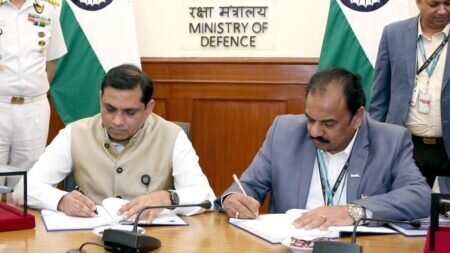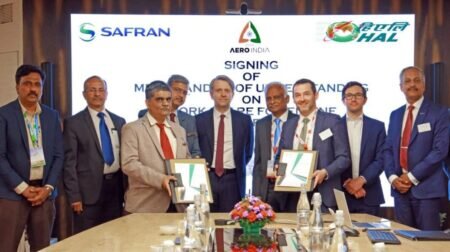The Indian Air Force (IAF) prepares to receive the first batch of 16 Tejas Mark 1A light combat aircraft from Hindustan Aeronautics Limited (HAL), as reported by a local news site.
This delivery marks a pivotal moment in the implementation of the army’s contract with the company, valued at $6.6 billion (48,000 crore rupees), forged in February 2021.
With the successful test flight of the first Tejas Mark 1A fighter in March, HAL's Chairman and Managing Director, CB Ananthakrishnan, has affirmed that the initial delivery will be concluded “in the next few months.” He underscored HAL's commitment to delivering 16 Tejas Mark 1A aircraft before March 31, 2025, highlighting that construction is already underway.
HAL is in the final stages of integrating five major upgrades to the Tejas Mark 1, elevating it to the Mark 1A designation. These upgrades include the installation of an active electronically scanned array (AESA) radar to replace the previous manually scanned array radar, along with a new electronic warfare (EW) system integrating protection jammers and mission computers.
Ananthakrishnan elaborated on the ongoing enhancements, stating, “The air-to-air refueling probes have been installed. Final testing needs to be completed and demonstrated. This is being done for the entire fleet of Tejas fighters as part of the contract for the second batch of 20 fighters.”
Additionally, modifications to the Tejas cockpit have been made to meet anthropometric requirements, ensuring compatibility with 90% of IAF pilots. “We have fully met the anthropometric requirements for the LCA, which requires the cockpit to be suitable for pilots from the 5th to the 95th percentile,” affirmed Ananthakrishnan.
Nevertheless, despite these advancements, further adjustments and testing are necessary before the Tejas Mark 1A can be deemed fully operational. Ananthakrishnan highlighted the need for integrations involving the fighter’s armament, such as the firing of twin ASRAAM missiles. “We have discussed the minimum deliverable configuration with the IAF so that they can start flying and suggest improvements and modifications,”he added.






